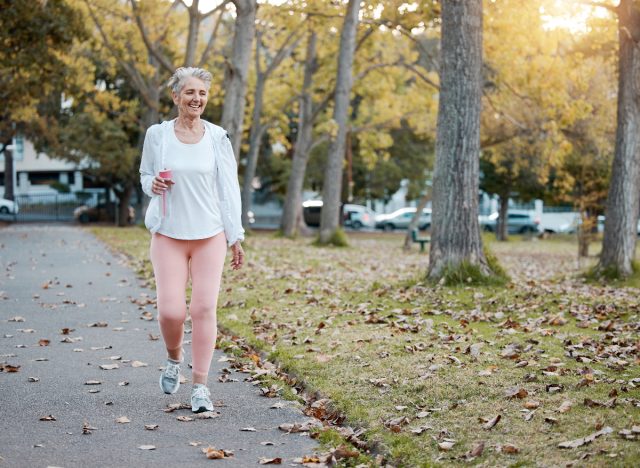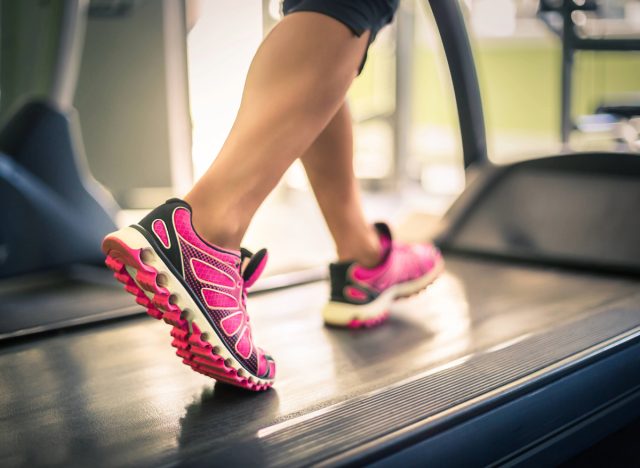How To Increase Your Average Walking Speed to Burn More Calories

Walking is one of the simplest, most accessible forms of exercise, and it's also surprisingly effective when it comes to burning calories. But if you're looking to supercharge your walking routine, there's one surefire way to do it: pick up the pace. That's right; increasing your average walking speed can help you burn more calories and boost your fitness without adding extra time to your workout. Whether strolling through the neighborhood or taking a brisk walk on the treadmill, turning up the tempo can make all the difference.
The beauty of walking faster is that it raises your heart rate, engages more muscles, and increases your overall energy expenditure. You don't need to sprint to see these benefits—a little extra effort can lead to significant gains. Plus, walking faster challenges your cardiovascular system and builds stamina, making it a fantastic addition to your weight-loss or fitness routine. It's a low-impact way to torch calories, especially if you're not into high-intensity workouts.
As a coach, I've worked with many clients who needed to move outside the gym to reach their weight loss goals. Walking is often the first step, and increasing their speed has been a game-changer.
In this article, I'll share why walking faster helps you burn more calories, strategies to boost your speed, and some of the best walking workouts to maximize your results. I'll also highlight common mistakes that can slow you down and how to fix them, ensuring you stay on track and walk your way to a leaner, fitter body.
Why Walking Faster Helps You Burn More Calories

The science behind walking faster is simple: the quicker you move, the more energy your body requires. Walking faster increases your heart rate, boosting your calorie burn. According to Harvard Health Publishing, a 155-pound person walking at a pace of 3.5 miles per hour burns approximately 266 calories per hour. Increase that pace to 4 miles per hour, and the calorie burn jumps to around 350 calories per hour. That's a significant difference just by speeding up your stride.
Walking faster also engages more muscle groups, particularly your core, glutes, and legs. When you move briskly, your muscles work harder to propel you forward, requiring more oxygen and energy. This process, known as aerobic metabolism, helps you burn more calories. Additionally, faster walking improves cardiovascular health by strengthening your heart and lungs, making it easier to sustain a higher intensity over time. The cumulative effect is a higher overall calorie burn, both during and after your workout, thanks to elevated metabolism's "afterburn" effect.
Proven Strategies To Increase Your Walking Speed

If you want to increase your walking speed, it's not just about pushing yourself harder. Proper technique and gradual progression are key. Start by improving your posture. Stand tall with your shoulders back and core engaged. This alignment allows for a more efficient stride and prevents fatigue. Focus on taking shorter, quicker steps rather than lengthening your stride. This helps maintain your balance and reduces the risk of injury, allowing you to pick up the pace more effectively.
Another strategy is to incorporate interval training into your walks. Alternate between periods of fast walking and slower recovery walking. For example, walk briskly for two minutes, then slow down for one minute. Repeat this cycle for the duration of your walk.
Interval training boosts your average walking speed and increases your cardiovascular endurance, making it easier to maintain a faster pace over time. You can also challenge yourself with incline walking—whether on a treadmill or outdoor hills—as this will naturally increase the intensity of your walk and force you to pick up the pace.
Best Walking Workouts to Boost Speed and Calorie Burn

One of the best ways to increase your walking speed is by incorporating structured workouts designed to challenge your pace. A popular method is the pyramid workout, where you gradually increase your speed in intervals and then decrease it in a mirror pattern.
Start with a comfortable pace for two minutes, then increase your speed slightly for the next two minutes. Continue this pattern until you reach your maximum sustainable speed, then work your way back down. This workout not only improves speed but also builds endurance.
Another effective workout is the tempo walk. Begin at a moderate pace for five minutes to warm up, then walk at your fastest sustainable pace for 20 to 30 minutes. Finish with a cool-down period at a slower pace. Tempo walks train your body to maintain a higher speed for longer, translating to more calories burned.
For a more intense challenge, incorporate walking sprints—short bursts of maximum-speed walking followed by recovery periods. These high-intensity intervals can dramatically increase calorie burn and improve walking speed.
RELATED: Walking on a Treadmill vs. Outdoors: What's More Effective?
Common Mistakes That Slow You Down—and How to Fix Them

1. Overstriding
One common mistake that can sabotage your speed is overstriding—trying to take longer steps to move faster. Overstriding decreases your efficiency and can lead to joint strain and muscle imbalances. To fix this, focus on taking shorter, quicker steps. Engage your glutes and core to propel yourself forward rather than relying on your legs alone.
2. Neglecting your arm swing
Another mistake is neglecting your arm swing. Your arms are crucial in helping you walk faster by providing momentum. Ensure your elbows are bent at a 90-degree angle, and swing your arms naturally as you walk. Avoid clenching your fists, which can create unnecessary tension.
3. Wearing improper footwear
Finally, pay attention to your footwear. Wearing shoes that don't support your walking style or provide enough cushioning can slow you down and increase your risk of injury. Invest in a good pair of walking shoes that are lightweight, flexible, and comfortable to keep your pace up and your walks pain-free.









